A few more of the Liberty Belle on the ground.
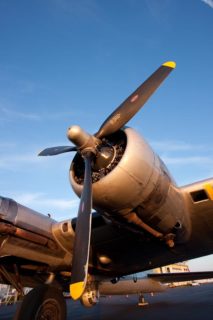 |
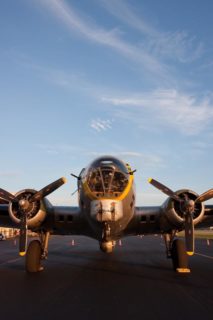 |
A few more of the Liberty Belle on the ground.
 |
 |

I was fortunate enough to have the opportunity to photograph the Liberty Belle, one of the 15 remaining Boeing B-17 bombers that is still flying, when it visited Fort Lauderdale’s Executive Airport this last weekend. Awesome, would be a good way to describe it.
A bit of history; On September 9, 1944 the 390th Bomb Group sent 12 aircraft to take part in a bombing raid on Dusseldorf, Germany. Over the target, one plane was hit in the bomb bay by flack, detonating the 1000 pound bombs it was carrying and destroying or knocking out of formation 9 of the 12 aircraft in the squadron. Six of those went down over the target, 2 flew on a single engine and landed in Paris, one made it to Belgium. The lone damaged plane to make it back to its home base was the Liberty Belle. After that raid, the Liberty Belle went on to complete 64 more combat missions before being salvaged.
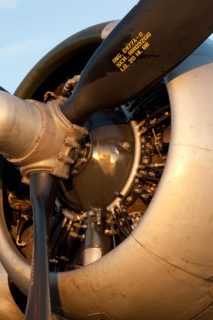 |
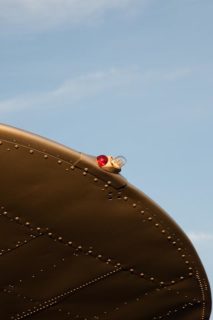 |
 Well it seems the rumor mill was right on this one. Canon’s first announcement for the fall season was the EOS 7D as expected. With an 18 megapixel sensor stuffed into Canon’s 22.3mm x 14.9mm APS-C format, the 7D promises to be a bit noisy, if only from the 8 frame per second motor drive.
Well it seems the rumor mill was right on this one. Canon’s first announcement for the fall season was the EOS 7D as expected. With an 18 megapixel sensor stuffed into Canon’s 22.3mm x 14.9mm APS-C format, the 7D promises to be a bit noisy, if only from the 8 frame per second motor drive.
However, as un-compelling as I thought the 7D would turn out, mostly due to cramming more pixels in an already small sensor, it carries some interesting improvements over the EOS 50D. Even more so, in terms of the user interface and customization options, the 7D looks like an improvement over all of Canon’s camera’s to date.
The EOS 7D supports the same ISO expansion options as the EOS 5D mark 2, specifically 2 stops over and 1 stop under the native range. That is a native ISO range is between ISO 100 and ISO 6400 in 1/3rd, 1/2 and full stop increments. In addition, ISO 50, ISO 12800 and ISO 25600 expanded settings are provided.
The 7D’s exposure meter now supports the same ±3 stop range of exposure compensation as seen in the EOS 1 bodies, something that’s not found even in the 5D Mark 2.
A few days ago the specs were leaked for the next Canon small format camera, the EOS 7D. Since then the rumor mills have been running rampant with the news. What raised some concern for me was that the camera would carry an 18 megapixel APS-C sensor. More pixels in a tiny sensor does not bode well for noise.
However, I’ve been saying for quite some time, that Canon’s solution to the pixel problem was simple, make the sensor bigger. Their APS-C format sensors measure 22.2 x 14.8mm, 1 to 1.4mm smaller than the APS-C format sensors in Nikon, Pentax and Sony cameras. It stands to reason that if you want to keep increasing the resolution and you can’t make the pixels incredibly more efficient, you just make the sensor bigger.
On the efficiency side, Canon reached the limit for micro lens size with the 50D and its gapless lenses. That rules out one possible mechanism for improvements. Making the sensor more efficient is another, and Canon seems to make progress here each generation, though it’s almost never revolutionary.
That leaves increasing the sensor size. The question isn’t so much can EF-S lenses support it; it’s clear from looking at images of adapted EF-S lenses that their image circle can usually cover a 1.3x APS-H sensor, something in the 1.5x range shouldn’t be a problem. The real question is can the mount support it.
In that vein I’ve done some quick measurements of the 2 EF-S lenses I have access to and it seems that the rear element protrudes ~10.16mm from the front surface of the lens mount.
Turning things around, the front edge of the mirror on the Rebel XTi in the up position, rests about 10.16mm behind the front surface of the lens mount, equal to that of the EF-S lenses measured. However, the front edge of the mirror on the 40D sits further back, at about 11.5mm. That seems to indicate that there is at least a 1.3mm margin to increase the depth of the mirror box (or at least the size of the mirror) with out interfering with the use of EF-S lenses.
Now the question is how big of a sensor does that result in and is the resolution consistent with the published rumors of the 7D?
If we figure the sensor can increase in size by 1.3mm in both directions, it will measure 23.5 x 16.1mm. If we keep the same 5.6 micron pixel size from the 50D we end up with a ~18 million pixel sensor.
Tangentially, it also occurs to me that the 7D is also a branding change. Presently the non entry-level APS-C 1.6x cameras are branded in the x0D range, which is very much what the 7D looks like. There’s still room to continue that numbering scheme for at least 4 generations. However a departure in sensor size may warrant a departure in naming as well.
So while it’s still a rumor, a larger sensor in the APS-C 1.5x format at 18 million pixels seems to hold up under some back of the envelope scrutiny. Will Canon take this approach? That remains to be seen, but with the expected announcement coming in just a couple of days, we don’t have long to wonder.
Updated 9-1-09: It appears that all this speculation was for naught. The EOS 7D turns out to be a nearly 18Mp sensor in the standard Canon APS-C 1.6x format. However, it still seems that should Canon wish to do so at some point in the future, produce a 1.5 crop body their EF-S mount may just support it.
Today for me has been spent mostly writing code, not my favorite pastime, and tomorrow looks like more of the same. I did, however make it a point to fire up Lightroom to play a bit more with DFine2, a rather nifty looking noise reduction “plug-in” for LR.
As clean as my mark 3‘s image are, there are times when I want to push the image further than I probably should or want to get as much out of a high ISO shot as possible. Either way my quest for that, and a healthy desire to keep as much of my work-flow in Lightroom, lead me to DFine 2 from Nik Software, which advertises itself as a Lightroom plug-in.
“Plug-in”, that may be what Adobe calls it, and by extension Nik Software, however I don’t know if I’d call requiring a full export to TIFF to a mostly stand alone program a “plug in”. Generally I think of plug-ins as something that adds functionality from inside of the program it’s plugged into.
That got me thinking, a while back I started a Lightroom 3 wish list and adding “real plug-ins” to it seems like just time time to post something about it.
Wish list after the jump.
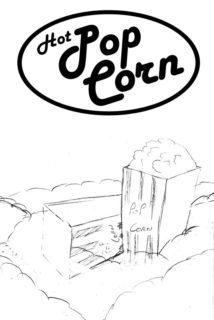
My mom is in the slow process of redecorating her movie room; she’s decided she wants to hang “snack bar” posters reminiscent of what you might expect at an old time theater snack bar. What that means, as both photographer and son, the task more or less ends up to me to design and create the images. Not that I mind.
The concept I was presented with was to have a series of images of various foods, pop corn, soda, candy, that are styled as snack bar ads. Following that I’m envisioning capturing the elements that most evoke. Each image will carry a theme and color-scheme complementary to both the overall theme and the subject in each image.
I’m starting with the pop-corn poster, which I envision will look like the concept sketch to the right (no, drawing isn’t my strong suit). The subject matter is dominated by yellows, reds and white, so I’m thinking I’ll work with that color pallet for the image I’ll complement and accentuate the red stripes on the popcorn containers with a red background. Tint my main light to warm up the yellows in the popcorn. I think, red and yellow will also work well as popcorn is suppose to be warm and buttery (also yellow) and red and yellow carry that connotation as well.
I’ve broken the image into it’s 3 key layers. For the foreground, I’m thinking out of focus popcorn to frame the main scene and evoke a bit of the feel of a popcorn machine. The main scene will be two popcorn cartons overflowing in a sea of popcorn. Finely the background will be a nice red gradient falling off as it progresses away from the scene.
I’m expecting the real challenge to be lighting this. I’ll be working with only 2 speedlites and not much to go by in the way of proper light modifiers. My overall goals are to provide even lighting without any harsh shadows, while dealing with any spill not having a proper softbox will create.
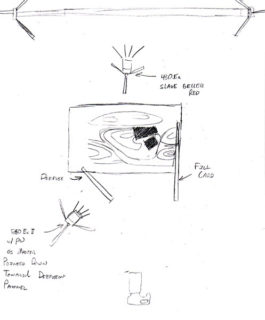
The background will be lit by a 430Ex on a light stand directly behind the scene. It will be gelled red and probably zoomed to 70mm give or take. If everything is centered right, it should give me a nice symmetrical falloff on the background giving me darker corners. Which is what I’m looking for.
The main light will be my 580Ex pulling double duty, being triggered by a pocket wizard and triggering (by way of master mode) the 430 ex slave. I’m thinking I should probably gel it between half and quarter CTO to warm up the popcorn and cartons. I’m expecting it to be slightly to camera left, and above the camera shooting though a diffusion screen. That should take care of most of the shadow issues. The rest, if necessary, will be taken care of by large fill cards on either side of the scene.
Of course the technical challenges are only compounded by the budget, of which there is none to speak of. I suspect I’ll be pulling some serious Strobist style hackery to get what needs to be done, done. Who knows maybe something creative and useful will come out of solving problems as the come up.
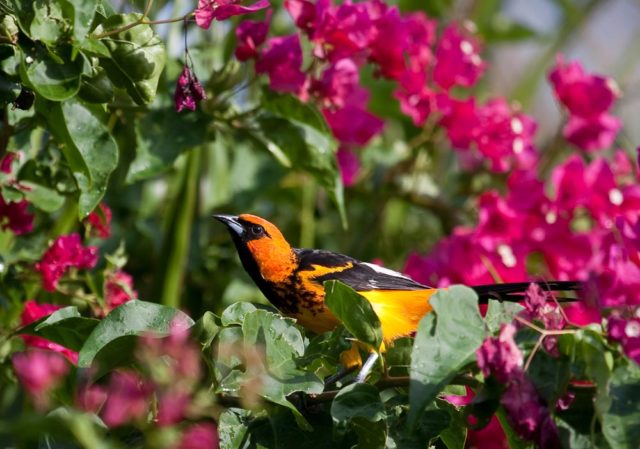
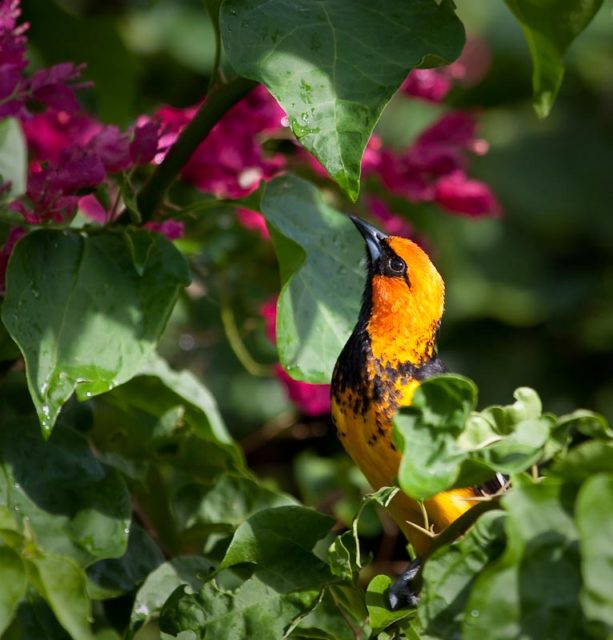
Over the past couple of days I’ve been chasing a Spot-breasted Oriole thought he neighborhood in an epic game of telephoto cat and mouse. Mostly with the mouse, er bird, winning. In the mean time I’ve also been working on continuing the two open series, A Brief History of Focusing and Photographing Flowers as well as starting work on a 3rd series investigating the design of camera UIs.

I hate reading the rumors and rumor sites, they’re like a train wreck, horrible but so very hard to to look away from.
The rumor mill seems pretty consistent on the perspective that the next EOS 1D will be an APS-H camera, and why not Canon’s own Chuck Westfall mentioned that Canon is committed to the APS-H format sometime ago in a Tech Tips. Further, apparently sports and journalistic photographers have put their backing behind the continued existence of this third class format as well.
I think there are compelling reasons to move on at this point. APS-H may have made sense when it saved some money compared to the larger full frame sensor, and sensors were clearly exotic and expensive to make. That would be what 5 years ago? The EOS 5D, EOS 5D Mark 2, Nikon D700 and Sony Alpha 900 have shown that a full frame sensor can be packaged in a body that costs less than the 1D. Clearly if a full frame sensor can be made inexpensively enough to put in a mid-tier camera at acceptable profit levels, the same should be true with a top-tier camera. Sensor cost certainly shouldn’t be an issue, nor do I think it ever was, in the ~$4000 price tag on an EOS 1D body.
What’s worse, APS-H buys us nothing over a full frame sensor and costs us wide-angle. No where in the idea of a sports or low light camera does it say it needs to be crop too. But wait, crop gives us free telephoto, you say. Oh no, not when the pixel density doesn’t increase as well. The only way to make your sensor size act as a free teleconverter, relative to a crop from the larger camera, is to make the pixels in the smaller sensor smaller.
| Camera | Native Resolution (in MP) |
Native Crop Factor | Resolution if Full Frame | Resolution cropped to 1.3x (in MP) |
Resolution if Cropped to 1.6x (in MP) |
TC Factor for a 10.1MP image |
|---|---|---|---|---|---|---|
| 1D | 10.1 | 1.3 | 17 | 10.1 | 6.7 | 1.3 |
| 1Ds/5D-II | 21.1 | 1 | 21.1 | 12.4 | 8.2 | ~1.44 |
| 40D | 10.1 | 1.6 | 25.9 | n/a | 10.1 | 1.6 |
| Native crop factor is relative to a full frame image equivelent to a 135 format film frame. The TC factor is the field of view equivalent crop factor compared to a full frame image when cropping to a fixed resolution. |
||||||
So long as the APS-H sensor’s pixel density continues to remain behind that of it’s full frame cousins, as it should to keep those high ISO capabilities where they should be, it never will get as much “reach” as they do. In fact, if it wasn’t for the 50% drop in frame rate (which is almost certainly due to the 2x increase in data that needs to be processed) you’re be better off shooting with a EOS 1Ds Mark 3 and cropping to if reach alone was your objective.
For all that non-gain in reach, we really do lose wide angle. What makes it even worse, is that by sharing the full frame mirror box of the 1Ds, there is no specialized ultra-wide but crop glass. Even if Canon made a 12mm ultra-wide, let alone a 12-20something mm ultra-wide zoom, it will always be wider on the 1Ds or 5D than on the 1D. Of course this doesn’t mean that the 1D is useless for anything but sports but it is limited in a way that the Nikon D700 and D3 aren’t.
I just don’t see any advantage to keeping the APS-H format at this point. For a long time I felt that Canon’s APS-C bodies were the second class citizens in the Canon lineup. When compared to Nikon’s DX bodies, they certainly are. However the APS-H 1D is almost certainly the 3rd class citizen. It’s a cropped sensor with less “reach” than the current full frame ones and no access to crop specific glass to give it really wide angle coverage that the APS-C bodies have.